#La Madama
Text
The Mystery Of La Madama. With Altar Set-up And Offering

A peculiar figure has recently become very popular in Rootwork. This person is La Madama. As you look around on different websites, or online blogs about rootwork or hoodoo you find more and more people are speaking on La Madama. But the conversation on her has become more misunderstood and that people are just repeating the same misinformation they are getting from websites and blogs and I'm no way a expert on her but I talked to some priest and practitioners in Espiritismo so I'm writing this post for the people who may be interested in La Madama or just want to learn about how to work with this type of spirit.
Who is La Madama? (Let's say, Who ARE Las Madamas?) Well, what she is not is part of hoodoo nor a hoodoo Saint as it is written online. She is not a slave women. These are dolls that are made out of porcelain or plastic and dressed in a particular color and this is a misconception that it's a specific spirit. This is totally incorrect. A Madama is a category of spirits - to which many individual spirits and guides belong to.

Again the question is who is she? Madamas are spirits of the dead, spirit guides that were slave women (or the descendants of slaves) round in stature, who has the stereotypical look of a house servant from the 1800's. Now Madamas are NOT conjure women (as in false American root workers what have you believe). La Madama isn't considered a the patron of playing card readers and bone readers or divination at least in hoodoo. Madama originated in the Latin community I believe Cuba not the US. These women are typically either women who practiced Espiritismo and maybe Santeria. When these Cuban and Puerto Rican women were alive they are depicted wearing gingham skirts (aprons) in the colors of the spirit which they worked with (red gingham for Chango or Siete Rayos, Blue gingham for Yemaya or Madre de Agua, etc.) They usually have their hair wrapped and there clothing in the same color. There are countless "Madama" spirits out there and they are NOT just one spirit.
Where did Madama Spirits come from? These spirits comes from the latino countries lik (Cuba, Puerto Rico, the Dominican Republic) and has spread to many other countries including Venezuela, part of Mexico and even the southern parts of The United States and This type of spiritualism works differently than the more formal "white table" version of spiritism found in Europe in the late 1800's. There have many categories of spirits including (but not limited to): Madamas, Indians, Gypsies, Nuns, Arabs, and even Pirates. There is not ONE spirit of La Madama, just like there is not ONE spirit of The Indian, nor is there ONE spirit of the Gypsy.
La Madama type spirits is NOT native to Rootwork and has actually never ever been a part of Hoodoo at all until maybe the last 15 to 30 years.
In the south southern root workers used other spirit's such as (Black Hawk) or other spirits or not native to hoodoo but were only found in Spiritualist Churches in the south and some would argue and I read that Christianity, praying the psalms and working with Saints, Indian Spirits, etc. is a rather new to Hoodoo that's incorrect hoodoo in the south has all ways use Christian prayers and Psalms in their practice. The spirit like Black Hawk plays a part later because of what he did and what he represents to us the south especially in Louisiana. Just like Marie laveau these spirits in the South like Louisiana has become important to us, and has become a part of our practice. (See post on Black Hawk)
Can I Work With "La Madama"? This is an interesting question. The answer isn't that simple. It isn't whether you CAN work with La Madama -because you can, The question actually should be "Do I have a Madama to work with me?" In (Spiritism), you don't go out seeking spirits to work with. Instead, you work with the spirits in your Spiritual Court that already surrounds you. The Spiritual Court is a group of the most intimate guiding spirits you have around you that protect and teach you. They are your "inner court" and they defend you when you cannot defend yourself. They guide you, teach you and inspire you. Each person's Spiritual Court is different than the next's. Similar to being initiated in Vodou we get our loa who wants to work with us and be a guide to that person we don't pick or choose which. Madama is the same you must have your own already in your court and a medium can help with identifying your spirits on your court.
Before you can work with her. "Madama" type spirits you need to find out IF THERE IS ONE IN YOUR SPIRITUAL COURT! This is the most crucial element that people don't take into account. You must first find out if you have such a spirit in your court with which to work and identify who is there for you. You can then work with to strengthen your relationship with those guides through prayer, meditation and contact with these spirits at your Spiritual Altar.
It is up to each person to learn as much as they can about their Spiritual Court. These spirits will act as the conduit for divine inspiration and guidance for that person. If you have a Madama type spirit you would need to find out where she's from, her name, what she practiced in her life and how to work with her.
Working and Petitioning La Madama: I would often see photos of people putting offerings to La Madama and petitioning her as if she was a saint. This is absolutely incorrect. She is not. This is not the manner in which Spiritists would ever work with a Madama-type spirit. Because there are many of her so who are you praying too exactly.

Not my photo
Setting up an altar to La Madama: people like to have depiction of her on their altar, like a statue, picture, doll or prayer card. This object acts as a physical container in which her spirit can manifest so when you call opon her for guidance and support. What a glass of water.
Making offerings to La Madama: Madamas enjoy receiving offerings thanking them for their assistance. This could be bouquets of flowers or a cup of coffee or a cigar. If you do leave her offerings, they are offerings of gratitude. Remember she's not a saint. These are given because she came through and helped you with an issue or to keep your connection with her strong.
Ultimately she will help you with reading, perceiving and psychic abilities as well as giving you inspiration when you do a spell or ritual. After all, she was a priestess in her time and knows how to work spells, (but she will tell you how to do it HER way, not the Hoodoo way) (because she was not a conjure woman, she was an Afro-Caribbean *spiritual worker).
One must understand very clearly that God is who we worship. A Madama-type spirit is not a saint to be petitioned. She is a spirit guide. She is there to give you guidance, inspire your spell work, guard you from harm, cleanse you when you pick up something nasty, and to be a teacher and mentor. You do not worship your teacher right so you would not worship La Madama.
If you don't have a Madama-type spirit in your Spiritual Court, that's fine and normal. You may have countless other spirits who are very powerful and close to you. But this internet fad of La Madama really needs to be handled with respect and people should have a better understanding so they don't waste their energy and money trying to petition a spirit that's not even accessible to them. Focus on the spirits that do surround you and keep those bonds strong, and you'll be much better off in the long run.
"Madama" is something originating from Latino countries, not the USA,
#La Madama#How is La Madama#Latina community#Madama spirits#Spirit Guides#like and/or reblog!#spiritual#google search#Altar#Petition la Madama#ask me stuff#follow my blog#african diasporic#african spirituality
26 notes
·
View notes
Text
Dear Devotees and Practitioners, This Is Important
youtube
#Santa Muerte#santísima muerte#black witch#Orishas#voodoo#hoodooo#vodun#loas#Santa Marta#yemaya#elegua#papa legba#San Simón#la madama#altars#shamanism#brujeria#brujería#magick#magic#art’s#spells#spirituality#alchemy#conjure#witchy 101#isis#auset#Osiris#Olokun
5 notes
·
View notes
Text
The Top 40 Most Popular Operas, Part 1 (#1 through #10)
A quick guide for newcomers to the genre, with links to online video recordings of complete performances with English subtitles.
Mozart's Die Zauberflöte (The Magic Flute) (Wolfgang Amadeus Mozart)
The most frequently performed opera worldwide: Mozart's fascinating, philosophical fairy tale opera, which appeals to both children and adults.
San Francisco Opera, 2010 (Piotr Beczala, Dina Kuznetsoca, Christopher Maltman, Erika Miklosa, Georg Zeppenfeld; conducted by Donald Runnicles)
Verdi's La Traviata
Tragic romance with social commentary, based on Alexandre Dumas fils' novel The Lady of the Camellias, which was also the basis for the classic 1936 Greta Garbo film Camille.
Los Angeles Opera, 2006 (Renée Fleming, Rolando Villazon, Renato Bruson; conducted by James Conlon)
Bizet's Carmen
The fiery tragedy of a seductive, free-spirited Spanish Romani woman and her loves, with some of opera's most iconic music.
Royal Opera House, Covent Garden, 2006 (Anna Caterina Antonacci, Jonas Kaufmann, Ildebrando d'Arcancelo, Norah Ansellem; conducted by Antonio Pappano)
Puccini's La Bohéme
Relatable slice-of-life romance that blends comedy and tragedy. The inspiration for the popular musical RENT.
Studio film, 1965 (Mirella Freni, Gianni Raimondi, Rolando Panerai, Adriana Martino; conducted by Herbert von Karajan)
Mozart's Le Nozze di Figaro (The Marriage of Figaro)
The best loved of Mozart's Italian operas, a great comedy of class conflict and sexual intrigue.
Glyndebourne Festival Opera, 1994 (Gerald Finley, Alison Hagley, Renée Fleming, Andreas Schmidt, Marie-Ange Todorovich; conducted by Bernard Haitink)
Puccini's Tosca
Political intrigue, lust, and bloodshed amid the splendor of Rome – some call it a "shabby little shocker," others call it thrilling.
Vienna State Opera, 2019 (Sondra Radvanovsky, Piotr Beczala, Thomas Hampson; conducted by Marco Armiliato)
Mozart's Don Giovanni
Arguably the greatest retelling of the legend of Don Juan, with comedy, drama, and Mozart's glorious music.
Salzburg Festival, 1954 (Cesare Siepi, Otto Edelmann, Elisabeth Grümmer, Anton Dermota, Lisa della Casa, Erna Berger, Walter Berry Deszö Ernster; conducted by Wilhelm Furtwängler)
Puccini's Madama Butterfly
Puccini's iconic "Japanese tragedy." Controversial from a racial standpoint, but a tearjerker nonetheless, and the inspiration for the musical Miss Saigon.
Feature film, 1995 (Ying Huang, Richard Troxell, Ning Liang, Richard Cowan; conducted by James Conlon)
Rossini's Il Barbiere di Siviglia (The Barber of Seville)
The lighter and more madcap prequel to The Marriage of Figaro, known as the quintessential comic opera.
Vienna State Opera, 2019 (Rafael Fingerlos, Juan Diego Flórez, Margarita Gritskova, Paolo Rumetz, Sorin Coliban; conducted by Evelino Pidò)
Verdi's Rigoletto
A richly melodic tragedy of a hunchbacked jester, his daughter, a lecherous duke, and a self-fulfilling curse.
Studio film, 1982 (Ingvar Wixell, Luciano Pavarotti, Edita Gruberova; conducted by Riccardo Chailly)
#opera#top 40#part 1#top 10#video#complete performances#english subtitles#die zauberflöte#the magic flute#la traviata#carmen#la boheme#le nozze di figaro#the marriage of figaro#tosca#don giovanni#madama butterfly#il barbiere di siviglia#the barber of seville#rigoletto
111 notes
·
View notes
Text








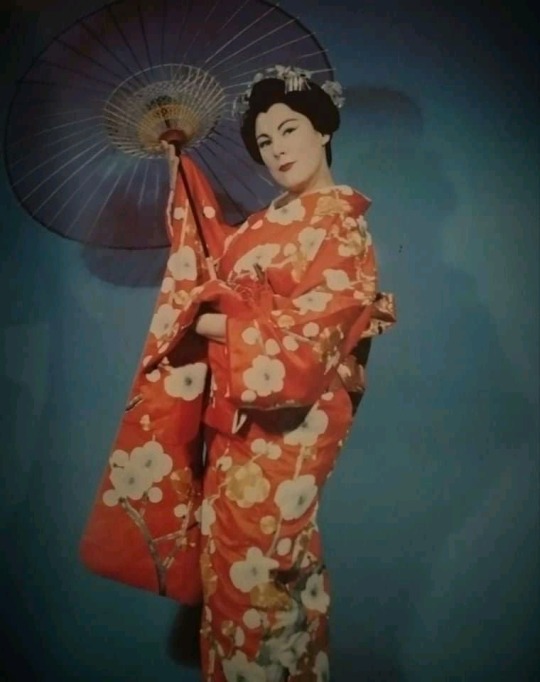
Renata Tebaldi
#renata tebaldi#puccini#ettore bastianini#tosca#la fanciulla del west#madama butterfly#iloveopera#la boheme
10 notes
·
View notes
Text
Just had to call the police for the first time in my life. 3/10 would not recommend.
#I’m shaking lol#why am I even writing it on here#idk man#io the chiamo la madama non l’avrei mai detto
25 notes
·
View notes
Text
Puccini - Madame Butterfly
Un bel di vedremo
youtube
Un bel dì, vedremo levarsi un filo di fumo sull’estremo confin del mare. E poi la nave appare. Poi la nave bianca entra nel porto, romba il suo saluto. - Vedi? È venuto! - - Io non gli scendo incontro. Io no. - - Mi metto la sul ciglio del colle e aspetto, e aspetto gran tempo e non mi pesa la lunga attesa. - È uscito dalla folla cittadina, un uomo, un picciol punto s'avvia per la collina. - Chi sarà? Chi sarà? - - E come sarà giunto che dirà? Che dirà? - - Chiamerà ***Butterfly*** dalla lontana? - Io senza dar risposta me ne starò nascosta, un po' per celia e un po' per non morire al primo incontro. Ed egli alquanto in pena chiamerà, chiamerà: ***Piccina mogliettina, olezzo di verbena*** i nomi che mi dava sempre al suo venire.
Butterfly rivolgendosi poi a Suzuki dice nella sua battuta finale :
Tutto questo avverrà, te lo prometto. Tienti la tua paura io con sicura fede l'aspetto.
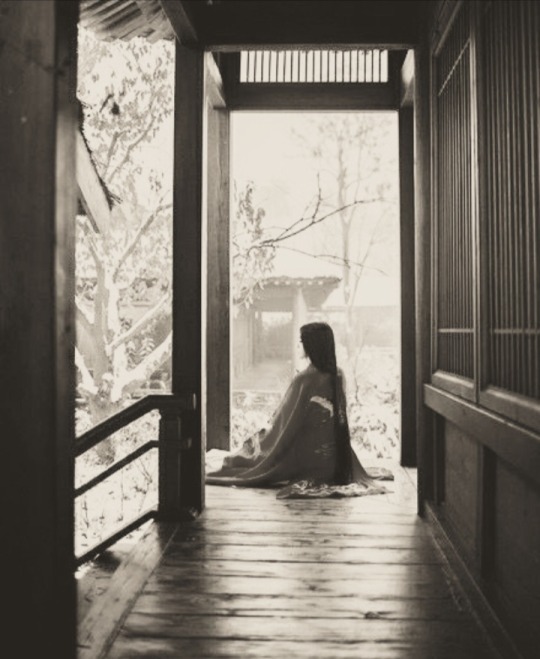
#opere teatrali#madama butterfly#puccini#La prima opera vista con papà a soli 10 anni al teatro Massimo#Si ho pianto come una fontana
16 notes
·
View notes
Text


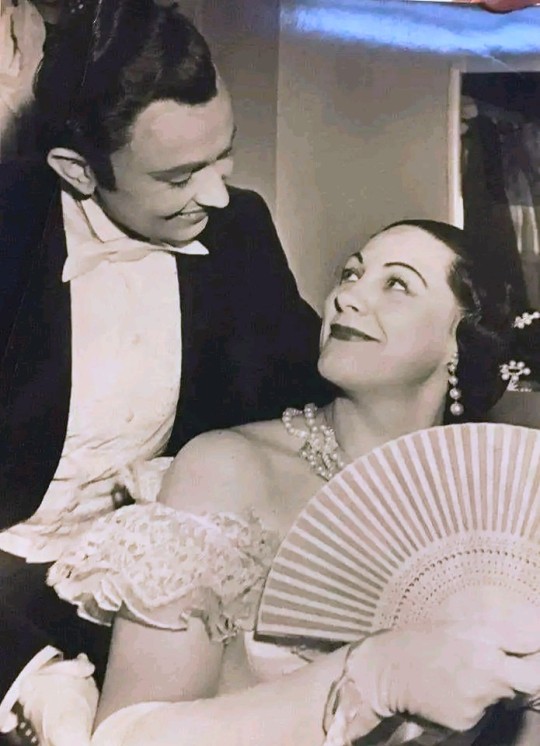


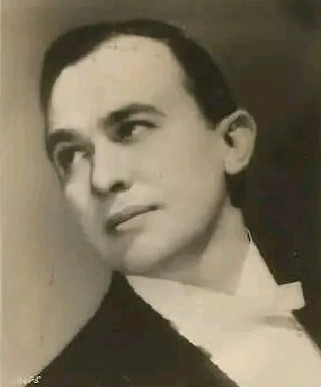




GIUSEPPE CAMPORA 🌹
Copyright ©️ Teatro La Fenice, Teatro alla Scala di Milano e RAI & Metropolitan Opera House NY; for details please consult ALT over images. Thank you very much 🌺
#tenori titani 7#tenori titani#giuseppe campora#renata tebaldi#marcella pobbe#la traviata#francesca da rimini#madama butterfly#gigliola frazzoni
5 notes
·
View notes
Text




January 21. 1925 at The Metropolitan Opera.
A Puccini Memorial Performance after the dead of the great Composer November 29. 1924.
Click on the pics for see the cast in that special program. Take also a look on the full program in that week and see that at the same day in the evening was a performance of Wagners “Walküre”.
#Madama Butterfly#Giacomo Puccini#Puccini#composer#classical composer#opera#bel canto#Florence Easton#dramatic soprano#soprano#Tosca#Maria Jeritza#The Metropolitan Opera House#Metropolitan Opera House#The Metropolitan Opera#The Met#Metropolitan Opera#Met#La bohème#Beniamino Gigli#lyric tenor#tenor#Adamo Didur#bass#music history#Die Walküre#Richard Wagner#Wagner#Lohengrin#Thaïs
5 notes
·
View notes
Text
Puccini is the Marvel Comics of opera.
No, I won't elaborate.
2 notes
·
View notes
Text
Berlin Ballet Company Belgrade Serbia
Berlin Ballet Poster – Still In Belgrade
The Berlin Ballet Company performance Saturday night was a magnificent display of “grace, strength, and artistry exhibiting the latest creations and interpretations in the world of ballet”. More of a classic ballet person, I wasn’t sure what to expect of the venue or performance. Since I appreciate innovative modern dance, I booked the ticket online. The…

View On WordPress
#100th anniversary Maria Callas‘ Birthday#Belgrade DJ Marko Nastić#Berlin Ballet Company#Director of Dorćol Platz Miloš Ignjatović#Dorćol Neighborhood Belgrade#Dorćol Platz#La Gioconda#Lucia di Lammermoor#Madama Butterfly#Mermaid’s Club Berlin Ballet Company#Republic Square Belgrade#Rigoletto#Siren’s Club and Techno Ballet Odyssey DJ Marko Nastić#Stari Grad Belgrade
1 note
·
View note
Text
You Can Cry If You Want To: The Triumph of Tragedy
It might seem odd, doing all the things one does to have a night out – buying tickets, hiring a babysitter, finding parking – when it’s preordained that the evening will end in tears. In some cases, though, tears are part of the package.
When the curtain falls on Opera Tampa’s production of La Traviata, it’s a safe bet the audience will contain several red, tear-moistened eyes, and that the…

View On WordPress
#aristotle#arts#catharsis#dance#don giovanni#dramegy#hansel and gretel#La Boheme#la traviata#Madama Butterfly#music#opera#Opera Tampa#performing arts#straz center#straz center for the performing arts#Tampa#the fault in our stars#theater#titanic#tosca#tradegy#tristan und isolde
1 note
·
View note
Text
I need a new opera I can listen to on a loop while I work or I'm going to ruin rigoletto for myself
#I've been through don giovanni (throwback time)#la traviata (obsessed)#un ballo in maschera (it's okay)#il trovatore (very good I love drama + azucena my beloved)#rigoletto (what is everyone's problem? great music)#madama butterfly (I liked it but think I prefer verdi)#what next#I've seen tosca before so I could revist that#but perhaps a new verdi opera#as long as its in italian I like being able to follow along (roughly)#opera#personal#*
1 note
·
View note
Text

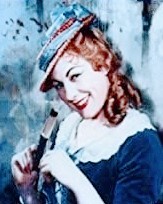







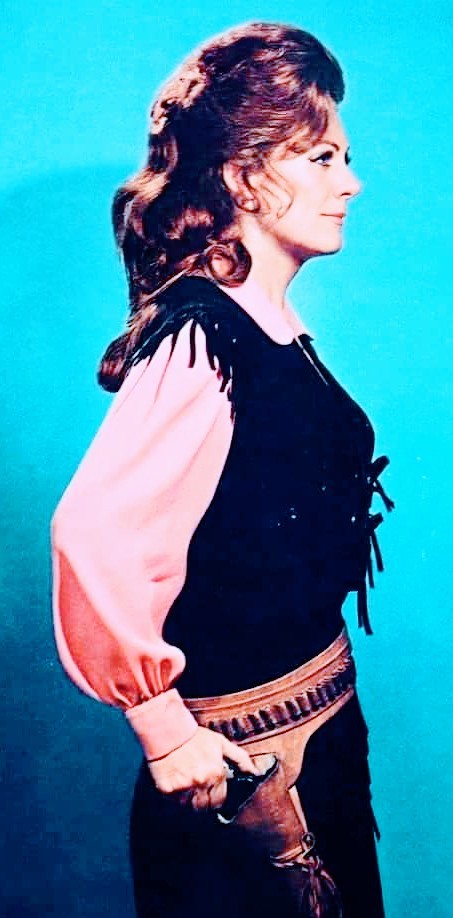
0 notes
Note
Where do you watch operas?
There are plenty of complete filmed opera performances available on YouTube, which you can watch for free. Unfortunately, not all of them have English subtitles, but if necessary, you can always find a translation of the libretto online to follow along with.
In fact, just for fun, as an example, I'll provide some links to complete filmed performances of the world's top 10 most popular operas, with English subtitles.
Die Zauberflöte (The Magic Flute)
Studio film, 1971 (Nicolai Gedda, Edith Mathis, William Workman, Christina Deutekom, Hans Sotin; directed by Sir Peter Ustinov; conducted by Horst Stein)
La Traviata
Studio film, 1968 (Anna Moffo, Franco Bonisolli, Gino Bechi; directed by Mario Lanfranchi; conducted by Giuseppe Patané)
Carmen
Royal Opera House, Covent Garden, 2006 (Anna Caterina Antonacci, Jonas Kaufmann, Ildebrando d'Arcangelo, Norah Ansellem; staged by Francesca Zambello; conducted by Antonio Pappano)
La Bohéme
Studio film, 1965 (Mirella Freni, Gianni Raimondi, Rolando Panerai, Adriana Martino; directed by Franco Zeffirelli; conducted by Herbert von Karajan)
Le Nozze di Figaro (The Marriage of Figaro)
Teatro alla Scala, 2006 (Ildebrando d'Arcangelo, Diana Damrau, Marcella Orsatti Talamanca, Pietro Spagnoli, Monica Bacelli; staged by Giorgio Strehler; conducted by Gérard Korsten)
Tosca
Teatro Real de Madrid, 2004 (Daniela Dessí, Fabio Armiliato, Ruggero Raimondi; staged by Nuria Espert; conducted by Maurizio Benini)
Madama Butterfly
Theatrical film, 1995 (Ying Huang, Richard Troxell, Ning Liang, Richard Cowan; directed by Frédéric Mitterand; conducted by James Conlon)
Don Giovanni
Zurich Opera, 2001 (Rodney Gilfry, László Polgár, Isabel Rey, Cecilia Bartoli, Liliana Nikiteanu, Roberto Saccá, Oliver Wimer, Matti Salminen; staged by Jürgen Flimm; conducted by Nikolaus Harnoncourt)
Il Barbiere di Siviglia (The Barber of Seville)
Metropolitan Opera, 2007 (Peter Mattei, Juan Diego Florez, Joyce diDonato, John Del Carlo, John Relyea; staged by Bartlett Sher; conducted by Maurizio Benini)
Act I, Act II
Rigoletto
Studio film, 1982 (Ingvar Wixell, Luciano Pavarotti, Edita Gruberova; directed by Jean-Pierre Ponnelle; conducted by Riccardo Chailly)
#opera#complete performance#die zauberflöte#the magic flute#la traviata#carmen#la boheme#le nozze di figaro#the marriage of figaro#tosca#madama butterfly#don giovanni#il barbiere di siviglia#the barber of seville#rigoletto#english subtitles#youtube
371 notes
·
View notes
Text
actually i'm going to talk about the met's weird thing with the rust belt more because it was definitely one of those things where a few years ago when the new met lucia was in development i was like, oh cool i wonder what they'll do with that, but now that we're here... man does it leave a bad taste in the mouth.
here's a question for you: Why Do So Many Operas Take Place In Seville?



seville is the setting for some hundreds of operas, including many of the famous ones: the barber of seville, carmen, la forza del destino, the marriage of figaro, fidelio, don giovanni (which actually might not take place in seville but given don juan stories up to them did it sticks)... the list keeps going. and there was a legitimate reason for this- for hundreds of years, seville was seen as a seedy and sexualized location where anything could happen. that exoticism carries over into the plot of many of the Seville Operas, which often feature seductions, crimes, and passion stories that fit neatly into the tales of the seedy city.
opera is about, in a lot of ways, EXOTICIZING OTHER PLACES. the spectacle of a setting was often a major part of the excitement of seeing a new opera, especially in the 19th century. but some of these places 'work' better than others, for a variety of reasons that boil down to the politics of representation and who is being who onstage.
seville works as an Exotic Opera Location Du Jour for multiple reasons.
for one thing, if you notice, a lot of the seville operas take place 60-100+ years before the composition of the opera. for example, the marriage of figaro and don giovanni were composed in 1786 and 1787 respectively, and both depict 1600s seville. if you were writing a Seville Opera right now, for comparison, it would probably take place between 1890 and 1960- there's enough of a time gap that exploring the world as a more fantastical setting is easier to swallow.
for another, seville is in western europe, and many of the composers depicting it were also from western europe. there is an evened playing field. (THERE IS A NOTABLE EXCEPTION about this that I WILL GET TO SOON.)
finally, now that these operas are over a century old, we're even more removed from their concept of 'seville' and the 'seville' in operas has been turned into something of a convenient fantasy location in which to put an opera. it's something out of a medieval times dinner and tournament and not necessarily meant to be Actual Real Seville at all, which works fine because Seville Operas work without needing much context about the location. don jose is a soldier, you don't need to know what seville soldiers' duties were. figaro is a barber, you don't need to know what barbers in seville were like. and so on.

but there are other opera locations that don't serve this purpose as well- often nonwhite regions appropriated by white composers. the incredibly warped conceptions of egypt that show up in aida and the magic flute, the looking-glass japan of madama butterfly, the brief moment in which la fanciulla del west wherein the opera remembers the existence of native american peoples... suddenly the make-believe of exoticism goes away and is replaced by a sour feeling because in many cases these cultures could not have a say on their own depictions in the operatic world, while the western europeans featured in the operas that exoticize locations like seville or paris could.

carmen is an interesting case study in Opera Exoticism because it features a location that is fine enough to exoticize (early 1800s seville) and a titular character that is not. carmen was- and, in many productions, is still- written as romani. she embodies many negative stereotypes about the culture- she is seductive, morally ambiguous, a smuggler, a femme fatale. yet we as an audience are made to sympathize with her. she is honest about who she is, accepting of the hard truths that are given to her; she is close to her friends and her crueler moments come across as more of an ill-planned joke than a real sense of antipathy. carmen is both a product of how romani people were written by white men in her time, and progressive in that we root for her against the (white) don jose. (and it should be noted that she knows that if he kills her he will be executed for it- carmen is about a mutual kill.) a good carmen production will evaluate all of these features and include them into the work somehow; be it through metatextual commentary, or careful representation, or understanding of what the audience is seeing.
anyway, now that we've covered all that, let's go look at The Met Opera's Current Fascination With Lower Class American Communities and see what we find there.

the rust belt and the sun belt have captured the imagination of the met opera recently, as seen in their current productions of lucia di lammermoor and carmen. these settings are depicted as grimy, miserable, and joyless; women are thrown around by men, men are depicted as one-dimensional monsters that are not to be understood or seen into. the cruelty is the point- these productions do not treat lower-class americans as people to relate to or understand. the sole exceptions are lucia- who is made out to be something of an outsider, so the audience can relate to her- and carmen, who is misinterpreted into being a sad woman who just wants love (god forbid a woman have some other motivation). the racial issues that dominate the cultural conversation in america are unspoken of in these productions, even when there is an opportunity to; this becomes especially uncomfortable in carmen, where the above history of carmen as a nonwhite woman and the opera's setting on the US-Mexico border (with the soldiers cast as border agents!) goes unmentioned in the name of 'heightening the class and gender inequality'- both of which were already in the original work along with the race inequality!
these productions are both directed by non-american white people. simon stone is from australia, carrie cracknell is from britain. why would they want to depict this setting? because they see it as a dark, cynical den of seediness and repressed sexuality- a world where we don't have to worry about empathy, or broader implications, because the people in these settings do not go to the met- a world where we can look on with revulsion and unease.... this crosses the line from exoticism into fetishization, in which lower class people become pawns for the met to use as set dressing.

this is especially uncomfortable because of opera's long history being seen as a 'rich people hobby'. opera is characterized as snobbish, useless, reprehensible; an art form that exists only to please the rich and the white and the male-dominated. all of which is not true! i believe to the bottom of my heart that everybody deserves a night at the opera, and that there is an opera for everyone, and everybody should feel welcome in the opera house (or other opera space du jour). and there are so many people working to change the industry from the inside, particularly the work of artists of color to broaden the opera canon and depictions of that canon as we know them. but as long as the met continues to use poor people as set dressing instead of bothering to communicate with them in a meaningful way, as long as the met sees these settings as places where brutes live instead of human beings, that stereotype of the rich man's hobby is going to continue. and the met is going to suffer for it- as i suspect that, as time goes on, the voyeuristic lens of these operas into the lives of abused lower-class women will be seen as more and more revolting.
TLDR

138 notes
·
View notes
Text

Henry Miller and Anaïs Nin, Paris Uncredited and Undated Photograph
August 14, 1932
Anais:
Don’t expect me to be sane anymore. Don’t let’s be sensible. It was a marriage at Louveciennes—you can’t dispute it. I came away with pieces of you sticking to me; I am walking about, swimming, in an ocean of blood, your Andalusian blood, distilled and poisonous. Everything I do and say and think relates back to the marriage...
Here I am back and still smouldering with passion, like wine smoking. Not a passion any longer for flesh, but a complete hunger for you, a devouring hunger. I read the paper about suicides and murders and I understand it all thoroughly. I feel murderous, suicidal. I feel somehow that it is a disgrace to do nothing, to just bide one’s time, to take it philosophically, to be sensible. Where has gone the time when men fought, killed, died for a glove, a glance, etc? (A victrola is playing that terrible aria from Madama Butterfly—"Some day he’ll come!“)
I still hear you singing in the kitchen—a sort of inharmonic, monotonous Cuban wail. I know you’re happy in the kitchen and the meal you’re cooking is the best meal we ever ate together. I know you would scald yourself and not complain. I feel the greatest peace and joy sitting in the dining room listening to you rustling about, your dress like the goddess Indra studded with a thousand eyes.
Anais, I only thought I loved you before; it was nothing like this certainty that’s in me now. Was all this so wonderful only because it was brief and stolen? Were we acting for each other, to each other? Was I less I, or more I, and you less or more you? Is it madness to believe that this could go on? When and where would the drab moments begin? I study you so much to discover the possible flaws, the weak points, the danger zones. I don’t find them—not any. That means I am in love, blind, blind. To be blind forever! (Now they’re singing "Heaven and Ocean” from La Gioconda.)
I picture you playing the records over and over—Hugo’s records. “Parlez moi d amour.” The double life, double taste, double joy and misery. How you must be furrowed and ploughed by it. I know all that, but I can’t do anything to prevent it. I wish indeed it were me who had to endure it. I know now your eyes are wide open. Certain things you will never believe anymore, certain gestures you will never repeat, certain sorrows, misgivings, you will never again experience. A kind of white criminal fervor in your tenderness and cruelty. Neither remorse nor vengeance, neither sorrow nor guilt. A living it out, with nothing to save you from the abysm but a high hope, a faith, a joy that you tasted, that you can repeat when you will.
All morning I was at my notes, ferreting through my life records, wondering where to begin, how to make a start, seeing not just another book before me but a life of books. But I don’t begin. The walls are completely bare—I had taken everything down before going to meet you. It is as though I had made ready to leave for good. The spots on the walls stand out—where our heads rested. While it thunders and lightnings I lie on the bed and go through wild dreams. We’re in Seville and then in Fez and then in Capri and then in Havana. We’re journeying constantly, but there is always a machine and books, and your body is always close to me and the look in your eyes never changes. People are saying we will be miserable, we will regret, but we are happy, we are laughing always, we are singing. We are talking Spanish and French and Arabic and Turkish. We are admitted everywhere and they strew our path with flowers.
I say this is a wild dream—but it is this dream I want to realize. Life and literature combined, love the dynamo, you with your chameleon’s soul giving me a thousand loves, being anchored always in no matter what storm, home wherever we are. In the mornings, continuing where we left off. Resurrection after resurrection. You asserting yourself, getting the rich varied life you desire; and the more you assert yourself the more you want me, need me. Your voice getting hoarser, deeper, your eyes blacker, your blood thicker, your body fuller. A voluptuous servility and tyrannical necessity. More cruel now than before—consciously, wilfully cruel. The insatiable delight of experience.
HVM
--
Everyone else seems to have the brakes on… I never feel the brakes. I overflow. And when I feel your excitement about life flaring, next to mine, then it makes me dizzy. - Anaïs Nin to Henry Miller, 1932
55 notes
·
View notes